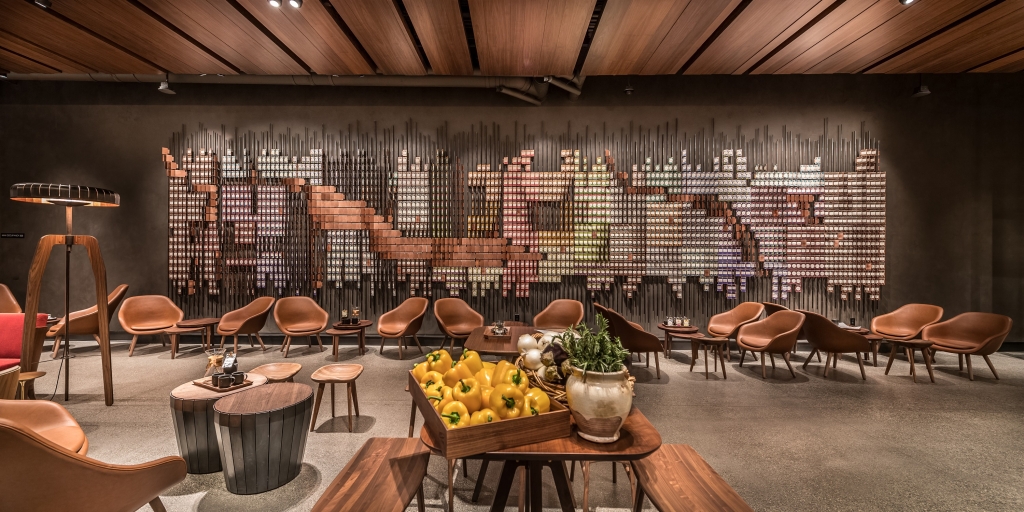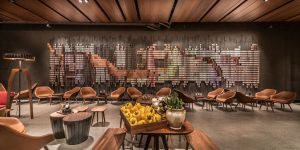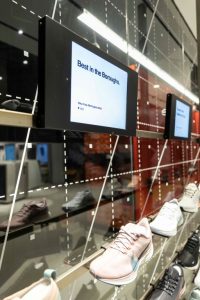I recently spoke at the LATAM Retail Show, Conference & Expo in São Paulo on a panel about digital experiences that create an impact beyond flagships. One of the questions asked of me after the presentation got me thinking about why we still so seldom in the U.S. see well-executed digital experiences chain wide.
My co-presenters (Manoel Alves Lima of São Paulo-based design firm FAL, and Tiago Quaresma of Lisbon, Portugal-based retailer Comur) put forth one of the most interesting exchanges in which I’ve been involved for some time. At times it seemed I was the “pro-tech panelist” who had to defend my years of advocating everything from digital signage to virtual reality (VR) to projection mapping. My go-to statement throughout the talk was: “Where retail goes off the rails is often when there’s little to no content strategy accompanying the fantasy of the hardware.”
I implored the audience and fellow panelists to take heed in understanding that with today’s complex customer journey – through online to mobile to in-store – the so-called “digital in-store experience” was not about a piece of hardware, nor one moment in time, but rather an A to Z strategy that includes tapping into the digital toolbox when, and only if, it makes sense within a well-crafted narrative. The consumer knows all too well when a digital experience or story doesn’t ring true or isn’t relevant to the brand’s story.
All too often retailers introduce a digital element (i.e., a sign, a digital design workstation) thinking that they’re cutting-edge, yet supported by little to no content development and planning. So, what typically happens? They all say: “We have this beautiful digital signage, but it’s not driving sales or consumer engagement.” Then they make the fatal call that it’s not worth the cost to roll out to the chain, while in reality, a content strategy could be all it needs to become successful.
While this may seem simple, I have to say that in the past 10 years of working in the “experience world” I’ve seen this mistake made over and over again.
Coming out of June’s InfoComm trade show in Orlando, Fla., where I also spoke, I was reminded that brands like Nike, Puma and Starbucks Roastery were not only great case studies but also examples of well-planned and -executed digital engagements.
Advertisement
Starbucks Roastery is a prime example of the use of augmented reality (AR) to support the mechanical process that is at the root of its name: Roastery. You see, they didn’t just say, “Let’s do a cool AR app.” Anyone who’s been inside a Roastery or has seen the imagery online knows that Starbucks invests heavily to bring a factory-like show into a well-designed store environment. It’s as much about elevating the coffee product to an art form as buying a cup of coffee.
When a customer gets to see what’s behind all those beautiful copper pipes and bins on their own device using AR, their connection to the brand grows more than it would simply seeing mass displays of packaged coffee. Starbucks has lifted the very best of a winery experience and brought it forward. What’s important here is that it was never about the technology, but rather a way to unlock the story beyond the process that makes this a winning example.
Nike’s House of Innovation 000 has brought about another form of digital experience. Its mobile app works in concert with the store design, achieving the brand’s goal to bring the app world into the store like never before. There are so-called “Nike Instant Checkouts” that allow products to be purchased via the app without ever having to interface or stand in the dreaded queue. This one move is disrupting the very checkout experience we’ve all known for so long. The app even allows you to ask for sizes and scan displays (QR codes are back!) to get product information or have apparel sent in your size to a dressing room.
Another key feature is the Nike Speed Shop, backed up with data-driven capture. This is data aggregation at its best: Nike takes information on New York-area purchases and curates the top-selling products into a specific in-store area, browsable by borough. Remember how Virgin Records used to display the top CDs sold in your market? This is basically the evolved, digital version meant to recognize that influencers drive the way certain segments buy.
In short, these are simply great examples of brands using customer preferences and buying behaviors to drive sales – the digital tool is a supporting cast member, not the star.
So back to the original question: How are some leading brands moving beyond a single, outstanding flagship? Both Nike and Starbucks have invested in the mobile experience to drive engagement in ways that align well with the brand architecture and key consumer behaviors. These types of user experience (UX) moments are highly impactful. Once the framework is built, the ongoing experience taps into stories that transform the browser into a buyer. Merge that with an interactive experience that drives up consumers’ positive perceptions of a brand, product or service, and you have an experience that’s no longer anchored to the flagship.
Advertisement
It’s the way the hardware is used that tells the brand story and helps customers connect with a retailer in order to purchase more and spread the word. That’s what well-planned content strategy can, and must, do for any brand.


 Photo Gallery1 week ago
Photo Gallery1 week ago
 Headlines3 days ago
Headlines3 days ago
 Headlines1 week ago
Headlines1 week ago
 Headlines1 week ago
Headlines1 week ago
 Designer Dozen2 weeks ago
Designer Dozen2 weeks ago
 Headlines1 week ago
Headlines1 week ago
 Designer Dozen6 days ago
Designer Dozen6 days ago
 Headlines1 week ago
Headlines1 week ago

















